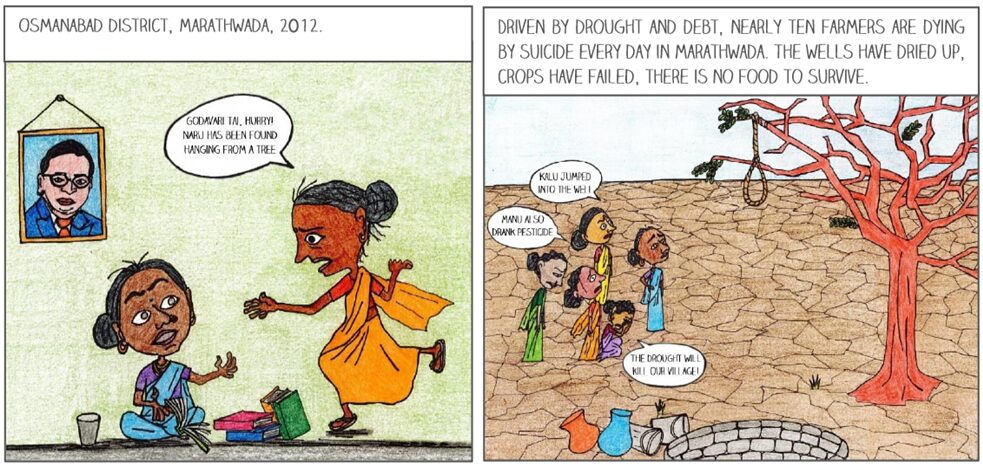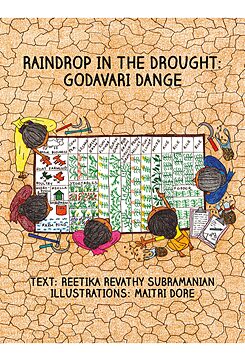
Reetika Subramanian co-creates book on Godavari Tai, an inspiring leader of women farmers in Marathwada in western India.
Marathwada is a historically drought-prone region with very low socio-economic and literacy indicators, which is why we intentionally focused on keeping the comic book less wordy to make it more widely accessible.
Reetika Subramanian
A Gates Cambridge Scholar has co-created a comic book on an inspiring Indian woman farmer who developed a one-acre cropping model to combat drought, debt and distress in her region.
The book, Raindrop in the Drought: Godavari Dange, by Reetika Subramanian and Maitri Dore, tells the story of Godavari Tai from Marathwada in Maharashtra state in western India which is the epicentre of India’s current agrarian crisis.
 A widow at 19, with two young children, Godavari began working with local women’s networks and joined the NGO Swayam Sikshan Prayog [SSP] where she founded a groundbreaking women’s federation whose aim is to promote economic and leadership development. In 2012, she mobilised hundreds of women farmers across 110 villages in the region to collectively grow raw vegetables and food crops in the face of a severe drought.
A widow at 19, with two young children, Godavari began working with local women’s networks and joined the NGO Swayam Sikshan Prayog [SSP] where she founded a groundbreaking women’s federation whose aim is to promote economic and leadership development. In 2012, she mobilised hundreds of women farmers across 110 villages in the region to collectively grow raw vegetables and food crops in the face of a severe drought.
Most farmers in the region grew sugar cane and soya beans, crops that require a lot of water. Through Godavari’s one-acre model, which was about growing more than 36 different types of vegetables, grains and lentils in one acre of land, farmers were able to support themselves and their families. She also leads an SSP community innovation fund for women farmers.
The comic book has been developed in collaboration with Goethe-Institut Indonesia as a part of their ‘Movements and Moments: Feminist Generations’ project. In all, 16 projects were selected for a grant from a global pool of 218.
Reetika [2019], who is doing a PhD in Multi-disciplinary Gender Studies focused on the impact of climate crisis on Dalit and Adivasi girls, met Godavari during the course of her fieldwork.
The book is published in both English and Marathi, the local language of Marathwada. The English copies are mainly being distributed online to create greater awareness of Godavari’s work. The Marathi edition has been printed and sent back to women farmers in Marathwada to help other groups to adopt the one acre farming technique.
Reetika and her co-author are also looking to partner with local schools in the district to distribute the illustrated books more widely.
She says: “Marathwada is a historically drought-prone region with very low socio-economic and literacy indicators, which is why we intentionally focused on keeping the comic book less wordy to make it more widely accessible.”












